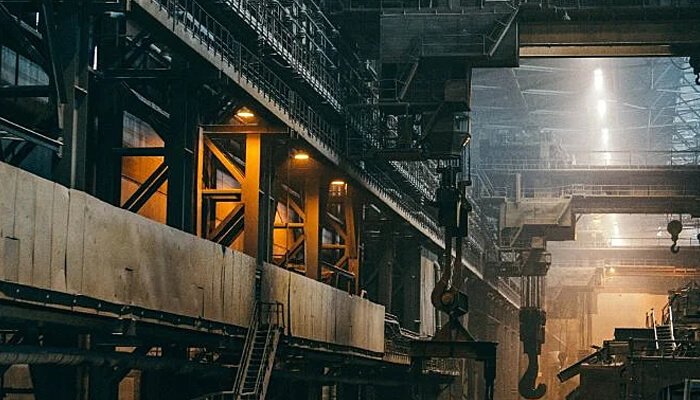Flyability addresses a critical issue facing various industries and official departments: the inspection and exploration of cramped indoor spaces that are inaccessible. Introducing groundbreaking improvements in commercial indoor drones, the company has spread its influence globally by serving customers in over 50 countries.
The reason for the company’s success is grounded in the reduced downtime, inspection costs, and risks to workers that its products have brought about. But the company’s CEO and co-founder, Patrick Thevoz, would like to elevate Flyability to even greater heights than it has already achieved.
Founded in 2014 as a PhD thesis by co-founder and CTO Adrien Briod, the company has amassed a total of $26.6 million in three rounds of fundraising. Before helping to start Flyability, Dr. Adrian Briod earned his MSc in robotics from the Ecole Polytechnique Federale de Lausanne (EPFL) and Harvard University. Then, he went on to pursue his PhD at EPFL’s Laboratory of Intelligent Systems.
It was during this time that he developed and patented innovative approaches for the stabilization of flying robots in cramped environments. And thus, the way to founding a commercial indoor drone company was paved.
Continuing with his research, Dr. Adrien Briod mastered various aspects of flying robot technology over the next six years. These aspects include the mechanical, electrical, and software engineering sides of developing indoor drones and robotics in general.
Patrick Thevoz, the company’s CEO and co-founder, has elevated the company from its novice status into a major market force. Patrick Thévoz used to work as a strategy consultant before Flyability’s inception, specializing in product launches for the life sciences industry. He graduated from EPFL in Switzerland with an MSc in engineering.
With this background and crucial skillsets, Thévoz was able to work to get Flyability’ from 2 to 100 employees. Moreover, he helped the company expand its operations and market influence, enabling it to acquire more than 300 happy customers.
Although it opened in 2014, the company’s first internal inspection drone was launched in 2015. This first breakthrough was named Elios, and it was constructed to float inside a protective cage as a model for working in confined and inaccessible spaces.
This protective cage came in handy for inspectors who required visual data via video footage to inspect industrial assets like boilers, pressure vessels, or nuclear reactors. Of course, this was made possible by the cage’s unique collision tolerance features.
After this noticeable success, Elios 2 was launched in the spring of 2019. This was the second generation of the company’s groundbreaking indoor drone. Improvements to its initial product were guided by the feedback received from industry inspectors on the original Elios.
The new features had been requested by several industry inspectors and included distance locking, stabilization, and unique lighting features that allow inspectors to see the depths of the objects they film.
Then, adding further innovations to its product, the company introduced the Elios 2 RAD in August of 2021. These new indoor drones comes with three different radiation sensors, allowing nuclear personnel to gauge the amount of radiation that might be present in different areas of a nuclear plant. Flyability already works with over 80% of the nuclear plants in the U.S. for visual inspections, and this new drone will help further support that work.
As mentioned earlier, the venture started off as a PhD thesis. The company’s co-founder, Adrian Briod, was tackling the problem of sending indoor drones into dangerous, cramped places instead of human beings. His vision was to reduce the hazards to human lives as well as make improvements in efficiency for such procedures.
His vision for indoor drones made to fly in confined spaces was first conceived when he was a doctoral candidate at the EPFL in Switzerland. He was particularly inspired and prompted to work on the idea after the 2011 disaster at Fukushima wrought mayhem and havoc, and he saw an opportunity for robotics to support work in dangerous confined spaces.
Moreover, Briod believed that mobile robots had the potential to drastically reduce costs for internal inspections in various industries. But the main guiding concern was the ability to avoid unnecessary threats to human life. For perilous tasks such as rescuing victims after natural disasters or inspecting inaccessible infrastructure, this technology was bound to be useful.
What prompted Briod to investigate indoor drones was his utter dissatisfaction with the prevalent solutions of the time. None of them were efficient or reliable in the cramped and cluttered environments that Adrian Briod had in mind.
For example, wheeled robots could easily be obstructed and get stuck in places with high obstacle density. Moreover, they can only reach places close to the ground, providing limited visibility and area scanning. Similarly, the flying robots available at the time could easily crash into obstacles and were rather dangerous to operate near humans.
Drawing inspiration from insects in flight, which can easily recover from obstacles in their path, the company began developing the Elios. At the time, it was the world’s first collision-tolerant flying robot.
The innovation of Elios lies in the patented mechanical design and flight control algorithms developed by the founders during five years of research at EPFL before the founding of the company.
This technology, based on robustness and simplicity, is the first commercially available answer to the most important issue in the growing field of flying robotics, unleashing their potential for industrial inspection—the company’s main target market—but also for search and rescue and security missions, which typically involve sending robots inside complex or cluttered environments.
Flyability customers work in a range of industries, including oil and gas, power generation, mining, maritime, chemicals, and sewer. The company is presently open to investments to further grow its operations and provide indoor solutions to more markets worldwide.
Message to your customers and viewers: Indoor drones
Our mission is to make internal inspections cheaper and safer, with the ultimate goal of removing the need for humans to enter dangerous indoor spaces for the purposes of visual inspections.
We are constantly gathering data from customers and applying it to our product roadmap to improve our technology so that we can provide the best internal inspection solutions in the world.
This is the link we would like to be included in the article. Thank you!
To clarify, we have this information; we just can’t share it publicly.



